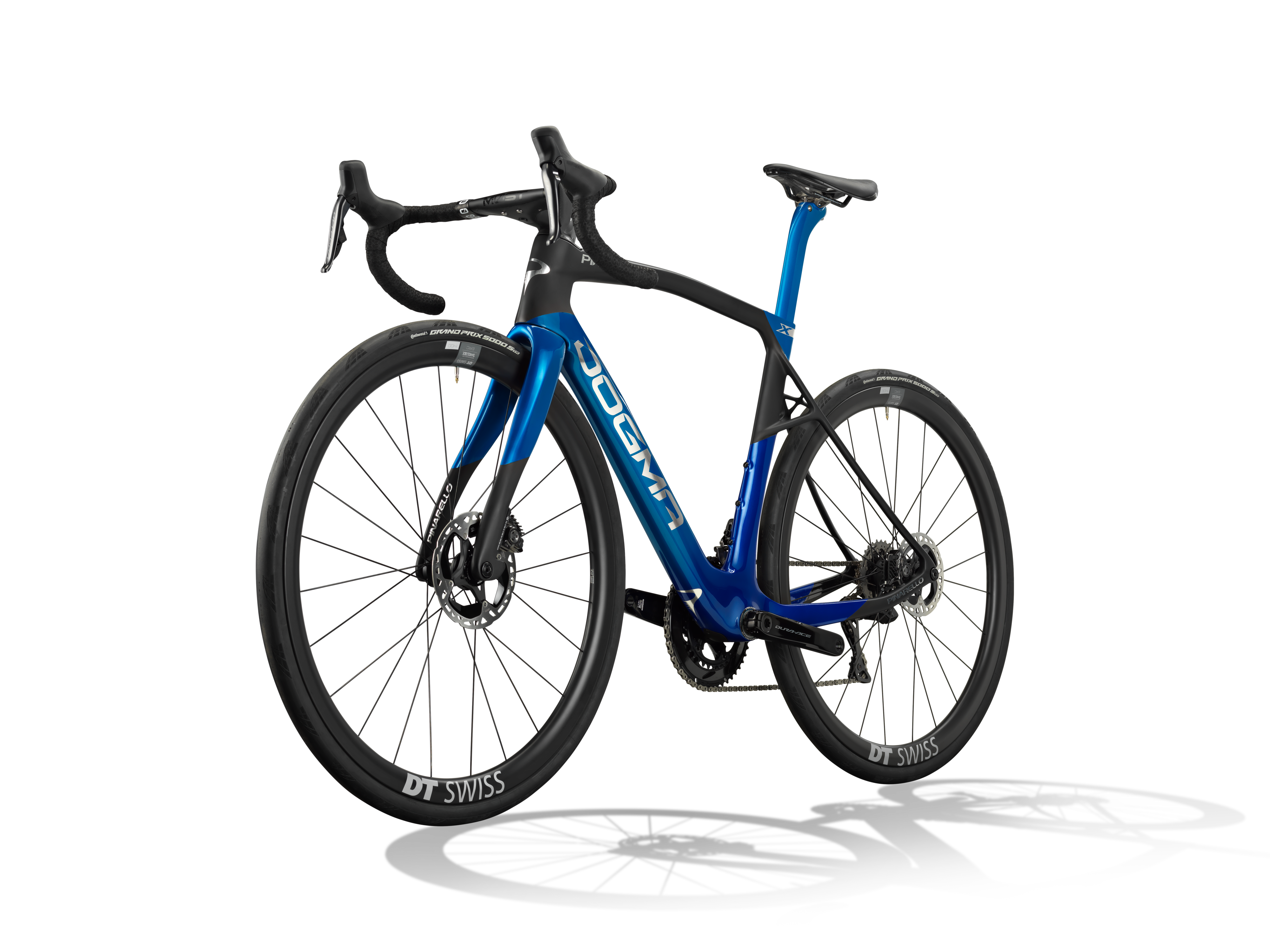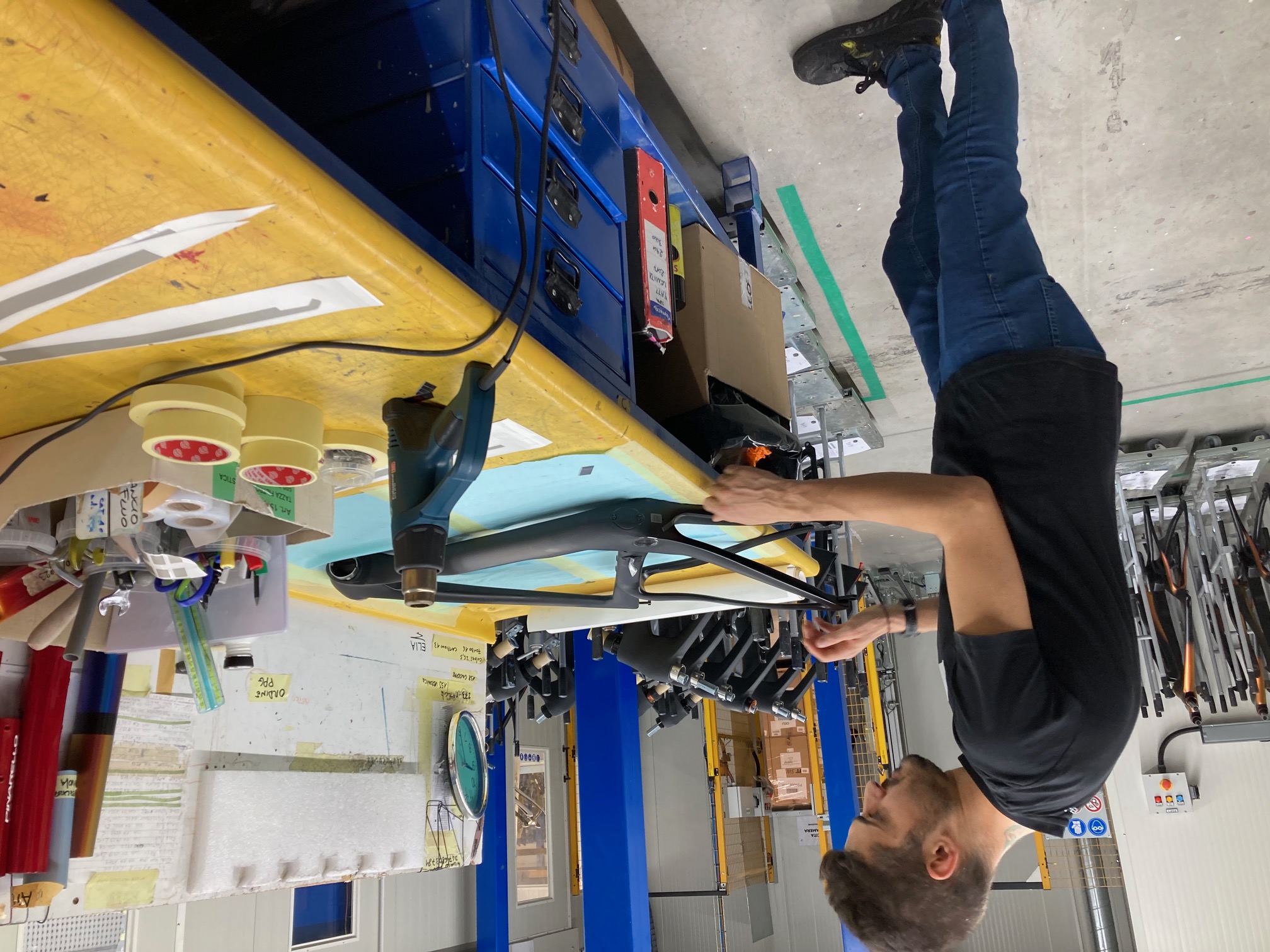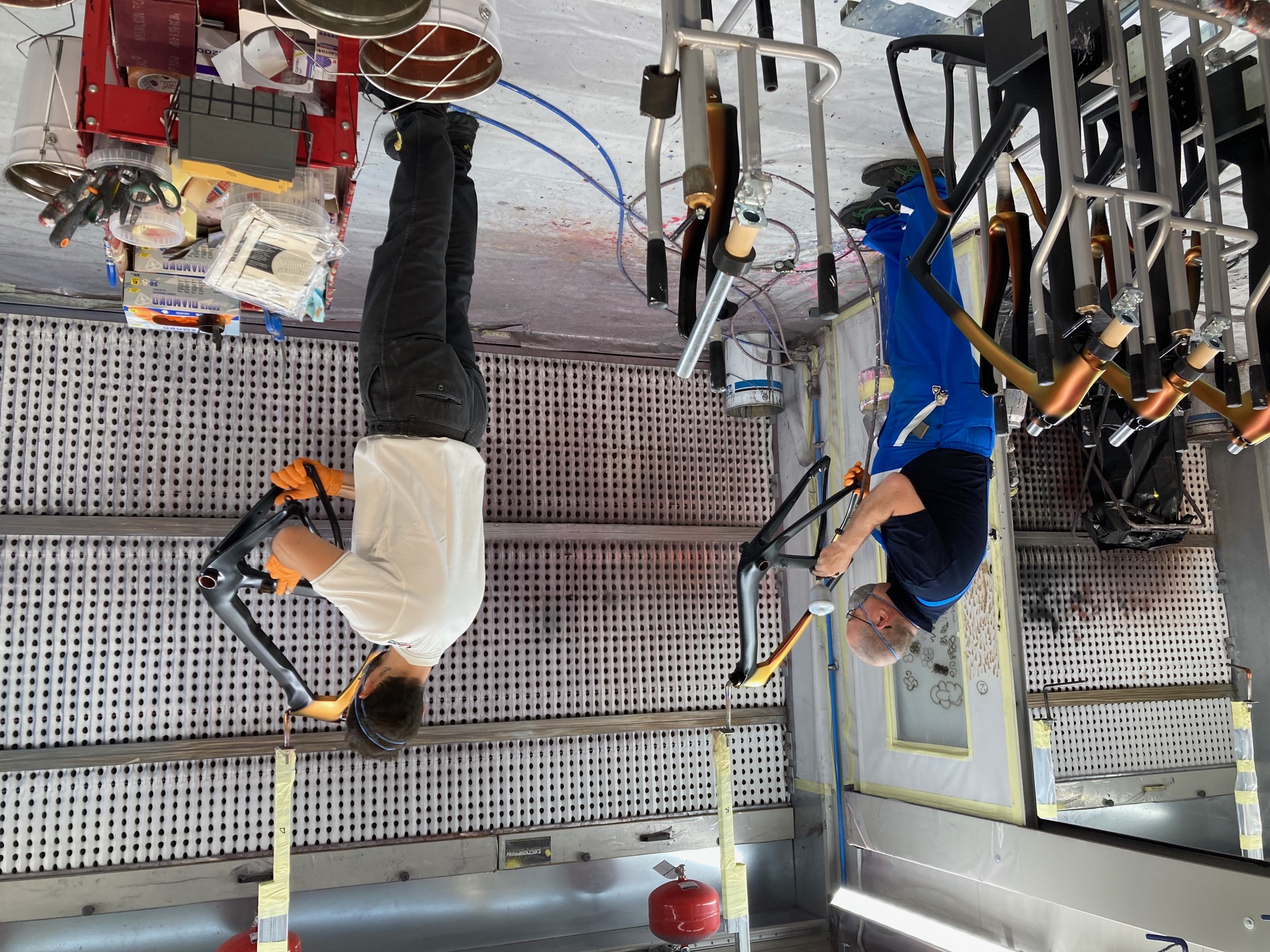
In 1981, a young Fausto Pinarello was sat at home in northern Italy, watching the conclusion of that year's Giro d'Italia on TV. The victor was Giovanni Battaglin – a man who would one day produce Giro-winning bikes himself. Battaglin romped away on the Tre Cime di Lavaredo with two stages to go to secure what would be his only Giro victory.
But Fausto Pinarello, then just 19 years old, was not so interested in the manner of Battaglin's success as the machine he achieved it on. It was, inevitably, a Pinarello. The punchline being that it had been painted by Pinarello himself. It proved inspirational and changed the course of his future.
"I didn't realise the business was my future, I wasn't sure," he says of his father's company. "But I saw that frame win the Giro on television in 1981 and thought, hey, we painted that frame last week. I thought at the time, this is probably my job for the future."
In northern Italy, the rain has been falling for weeks. The €5.5bn flood defence barriers surrounding Venice are earning their keep. But just up the road, inside the Pinarello HQ in Treviso it is bright, dry, and somewhat akin to the best bike shop in the world. Walking in, I almost feel as though I should be brandishing a Golden Ticket, found perhaps in the packaging of a Dogma, Wonka-style.
There's only one brand available in this bike shop, of course, but that brand has become, over the years and the decades, one of the most exclusive and successful brands in existence.
There are bikes and frames – mostly Dogmas in various incarnations – rowed up almost as far as the eye can see. In the foreground, a few machines belonging to Fausto Pinarello himself, in 54cm, hanging around waiting for their owner to saddle up. (Gravel in the rain, road in the dry, he later confides).
This isn't a factory – all of Pinarellos frames are made in the Far East. Rather it's a big, bright and beautiful open plan facility that at once serves as a paintshop, workshop, storage and logistics, just a stone's throw from where the original Mr Pinarello – Fausto's father Giovanni Pinarello – opened the first Cicli Pinarello shop.
It's a beautiful display, although ultimately it amounts to nothing more than Pinarello's bread and butter. Few of these bikes or frames will stay here for long – instead they will be out on the roads of Europe, under club riders, weekend warriors and even the WorldTour pro riders of Ineos Grenadiers.
Among the rows of glittering jewels are flashes of three new colourways that Pinarello released last week for its Dogma X endurance bike – something that it does on an annual basis.

The new colours go no deeper than a simple aesthetic refresh, although there are some good-looking hues on display. The deep-blue / black of 'Xolar Sea' looks especially attractive, while Xolar White will appeal to monochrome junkies and Xolar Yellow manages to look cutting edge and retro at the same time, in a fluoro kind of way.
As someone who began his tenure at the company painting frames, this aspect of his bikes retains a special place in the heart of Fausto Pinarello. He is proud to have his own painting facility at the headquarters – something not many companies do, he says, and is looking into the idea of producing his own proprietary Pinarello paints in the future.
It was possibly his humble beginnings at his father's company – working hard in the paintshop painting town bikes, rarely even seeing his father during company time – that makes Fausto Pinarello the affable and available type he is.
A dynamic and youthful 62 years old, far from squirrelling himself away in a plush office away from his employees, when we arrived, he was on the HQ floor chatting with them – with an obviously easy-going dialogue in both directions.
One of the first things he does is to offer us a coffee, swooping in with a flourish on his electric scooter to meet us at the machine at the far end of the floor. And then he is showing me a video on his phone of his latest gravel ride (he goes out with a group of riding buddies on a regular basis) which saw him ploughing through flooded trails. It has been raining a lot lately, he tells me.
Despite his soft spot for colours, he has always resisted having a 'Pinarello' colour. He does, however, confess a personal affiliation with red and there has rarely been a time when red doesn't feature in the company palette.
"Red is racing," he says, hinting at the colour of Italy's motorsport heritage with brands like Alfa Romeo, Ferrari, and Ducati. "When the gasoline meets the engine, you get fire – that's red, for sure."
He is justifiably proud of Pinarello's finishing process, despite the whole thing sounding as though it is ripe for a quip about watching paint dry. But seeing individual raw carbon frames come in from Taiwan and slowly being transformed, by hand, via a series of processes requiring care, skill and knowledge, into a gleaming and in many cases unique piece of cycling art, gives you an idea of why these things cost so much.

Before painting even begins, each frame is weighed to make sure it meets spec requirements, inspected, imperfections sanded, the whole surface polished. In the painting rooms, two and three painters at one time brandish spray guns as they apply the various stages of finish, before the decals are applied, entirely by hand, across the bike, followed by a clearcoat.
It's fascinating, and time consuming. One of Pinarello's biggest paint-based tricks is its 'MyWay' custom offering, which allows customers to customise the finish of their bike, including seatpost and cockpit components to within an inch of its life, including with iridescent Borealis paint. It isn't cheap, of course, with a bells-and-whistles MyWay customisation costing £1,120 at Pinarello's London store.

These days Fausto Pinarello, and the company that bears his name, remain as dynamic as ever – both kept fleet of foot with the help of new major-stake owner Ivan Glasenberg, the South African Ironman triathlete-turned billionaire businessman who bought his share of Pinarello last year.
"We're more active, faster, a little bit more flexible, I think it's good for our brand," Pinarello says of Glasenberg's involvement.
The brand is looking at new, bigger premises just over the way from its current location on the outskirts of Treviso, and it has delved into gravel of course, which Pinarello has embraced both personally and professionally given its greater likeness to road riding than mountain biking.
Talking of which, it was having two of the world's most accomplished mountain bike racers riding its bikes in the form of Tom Pidcock and Pauline Ferrand-Prevot at Ineos Grenadiers, that inspired Pinarello to begin making MTBs again after a significant hiatus.
Pinarello now makes the Dogma XC and while Fausto Pinarello hails it as the "best [mountain] bike in the world", says road bikes will remain his core business.
Pinarello clearly rates Pidcock highly, and will have been relieved to see it reported, just two days after we spoke, that the Yorkshire rider would stay at Ineos Grenadiers. As for the team's wider performance, Pinarello has no concerns about that either, he says, offering the philosophical outlook that you can't win everything against the likes of Tadej Pogačar and Jonas Vingegaard, just as Ineos's rivals struggled to beat Chris Froome and Egan Bernal when they were at their best.
"We're still battling, we're still there," he says. "We can't win everything, but we don't need to win everything."
And with that, our conversation is over and Fausto Pinarello is back on the floor, pacing, chatting, inspecting. Outside, the rain continues to fall. Looks like it'll be the gravel bike again this weekend, then.







